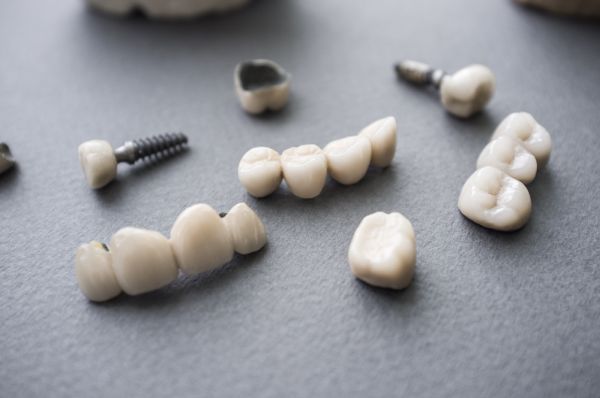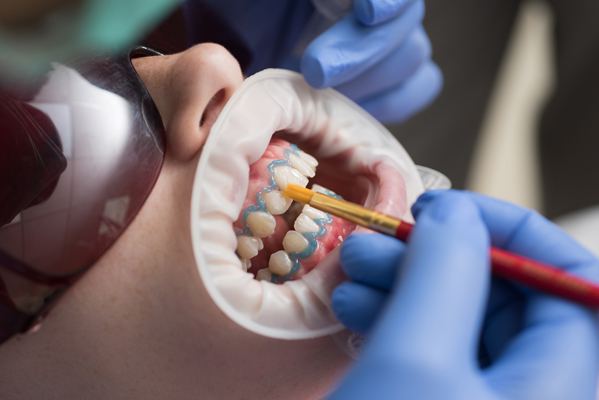How Does a Dental Crown Protect Your Tooth?

A dental crown can be used to fix a wide range of dental issues. Also called caps, these are tooth-like shells that are used to encase an entire tooth. It serves multiple functions: protecting the tooth from further decay and restoring its appearance.
Issues that crowns are often used to fix:
- Chipped, broken or cracked teeth
- Badly discolored teeth
- Severely decayed teeth
- Infected teeth
- Short teeth
- Gaps between teeth
How a dental crown protects a tooth
Here are ways that a crown protects the wearer's tooth from further damage:
1. It keeps away things that can damage the tooth
A dental crown protects teeth by keeping them safe from all the irritants in the mouth. Saliva, bacteria, food particles and acids are responsible for most of the dental issues people develop. Since the crown fully encases the tooth, these substances cannot reach the affected tooth to cause more damage.
For example, acids in the mouth are responsible for the vast majority of tooth decay. Some of these acids get into the mouth via the things a person eats, while others are produced by oral bacteria. These acids eat away at the protective outer layer of tooth (enamel), leaving the more sensitive parts of a tooth exposed.
2. It reinforces the tooth and protects it from bite forces
A crown also protects one's teeth from the forces involved in chewing. This is particularly important if the tooth has already been damaged. A crown restores the structural integrity and function of the tooth, allowing the patient to chew and speak with the damaged tooth as they have always done.
3. It holds the tooth together
When a tooth is protected with a cap, any fragmented parts of the tooth are held in place by the crown. This prevents the tooth from breaking into small pieces over time. It makes dental crowns an effective way to fix teeth that have fragmented into multiple pieces.
What to expect when getting a crown
There is not much to getting a dental crown. It starts with an evaluation, during which the dentist examines the patient and their oral issues. If the dentist determines a crown is the best solution, the patient's tooth will be prepared. This might involve removing a portion of enamel to make sure the crown holds tightly onto the remainder of the tooth.
An impression of the patient's mouth is taken, and this is sent to a dental lab that makes crowns. It takes about two weeks for the prosthetic to be ready. The dentist will usually fit the patient with a temporary crown and send them on their way.
Once the crown is ready, the patient is called back for an appointment, during which the temporary crown is taken out and the permanent one installed.
Need a crown?
Stop by our Burbank office if you are dealing with a dental problem that requires the use of a crown.
Request an appointment here: https://www.mediacenterdental.com or call Media Center Dental at (818) 473-1133 for an appointment in our Burbank office.
Check out what others are saying about our services on Yelp: Read our Yelp reviews.
Recent Posts
Teeth whitening works by applying a peroxide gel that lifts stains from enamel, the tooth’s outer layer. Custom trays hold the gel evenly against the teeth, promoting consistent shade change while limiting gel on the gums. As a general dentist, the focus stays on fit, concentration, and timing to help patients whiten gradually and comfortably.…
Children's oral health lays the foundation for a lifetime of healthy smiles. Pediatric dentists can promote proper oral and speech development by identifying and treating dental issues early on. Since these dental providers complete the training necessary to deliver tailored care for the needs of young patients, they are typically the best choice for children's…
Choosing the best dentist is essential for maintaining your oral health. However, finding the right dentist for you can feel overwhelming with so many options available. Fortunately, by considering a few key factors and gathering some key information, you can identify a trustworthy dental professional who meets your needs.Convenience plays a significant role in choosing…
Clear braces have grown in popularity over the past couple of decades due to their discreet nature. They are transparent, rigid plastic trays that apply a constant force to a person's teeth when worn. They slowly move the person's teeth toward a more appropriate alignment.Treatment with clear braces starts with the patient getting a series…


